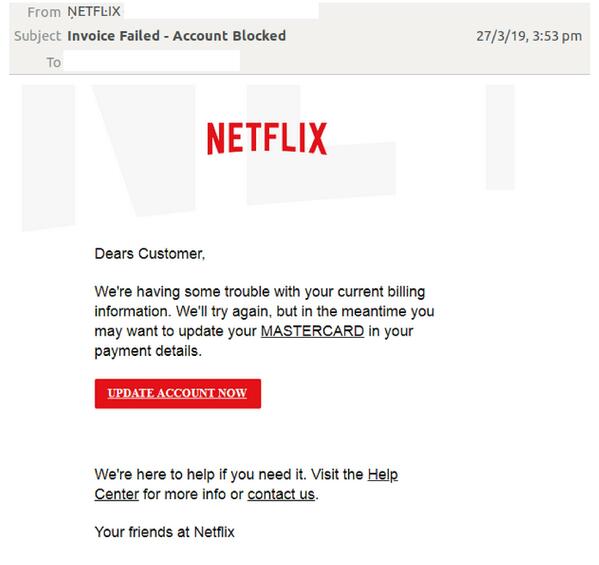
Pictured a phishing E-mail posing to be from Netflix
Netflix takes up 15% of the Internet’s bandwidth and is found in over 50% of American households. This massive company is one of the most known brands in the world. It's no wonder that Cybercriminals would utilize Netflix’s moniker to peddle their phishing E-mails.Maybe you’ve seen this E-mail as it has circulated around the internet, asking users to update their payment information. First, though, you’ll have to put in your password and maybe your social ID number and other information. The only issue is this is NOT Netflix.
This is an attack on you to gather your information and to get access to your bank account.
How can you protect yourself if something seems phishy?
Reel it in.
If you find that an E-mail from a company seems a little off or not legitimate, contact the company directly by finding their number online and giving a quick call to be sure. Check the sender and more importantly the domain of the E-mail (@companyname.com). If a link is provided within the E-mail or phone number, don’t use them.
Read it over.
Most phishing E-mails are going to have grammar or spelling mistakes. Perhaps the number is international for a US-based company. There may be a lot of language in it to make you fearful and get an emotional response, they are hoping to get you to impulsively contact them to solve the “issue.” Little details like that can tip you off that the E-mail is not legit.
Report it.
Report it to the company that they are pretending to be and let your IT Helpdesk know that there is a phishing E-mail going around. Over 90% of attacks start with a phishing E-mail; tools to protect you are a great investment. If you want to learn more about strategic technology to mitigate the risk of a cyber attack contact Ray Morgan Company.

